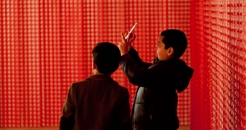 Key factor that predicts community involvement
Key factor that predicts community involvement
A study in 2013 by Matthew Bennett, University of Southampton, and Meenakshi Parameshwaran, University of Oxford, found that attending cultural or sports events was the largest predictor of civic engagement. Young people who said they went "often" to the theatre, ballet, classical music concerts, museums, art galleries or sports events were 65% more likely to have taken part in voluntary work than those who went less often.
Young people who attended weekly religious services were no more likely to do voluntary or community work than those who did not, and the religious denomination of young people made no difference to their willingness to volunteer. However those who attended religious extracurricular classes were 37% more likely to do voluntary work than others.
Analysing volunteering survey data on 4,760 people aged 10-15 in the UK for the study, they found that young people who frequently took part in cultural activities were much more likely to do voluntary or community work.
4% of 10-15 year-olds did voluntary work on most days, 6% did it once a week or more, another 8% once a month or more, and 33% did it once or several times a year. He said that these rates were comparable with results from similar US studies.
The researchers found that:
-
Girls were 50% more likely to volunteer than boys
-
Children from ethnic minorities were 27% more likely to volunteer than white British youths
-
Young people in the countryside were 20% more likely to volunteer than those from large towns and cities
-
Having a parent who volunteered made it 21% more likely that a young person would volunteer.
Matthew Bennett said, "It is important to engage young people in volunteering because there are many positive outcomes associated with civic engagement, such as increased health and wellbeing, and benefits for careers and educational attainment. Young people will not be able to benefit from these outcomes if they lack the opportunities to engage. Our models also suggest that more work needs to be done to engage boys, white youths, urban youths and working class youths. Furthermore, our findings demonstrate that youths may learn civic roles via their parents – parents that are involved in volunteering are more likely to have children who volunteer. So policy could also focus on mentoring programs that provide opportunities for youths to be involved, especially those who do not have parents that are engaged themselves."
Digging deeper into other effects of visits to cultural events, a 2013 study “Learning to Think Critically: A Visual Art Experiment” in USA analysed a randomized controlled trial (RCT) assessing the effect of a museum visit on students’ ability to engage in critical thinking, a key tool of higher-level reasoning. Thirty-five groups of students from grades 3 to 12 (8-17 year olds) were assigned by lottery to visit a new art museum; 35 other groups had their visit deferred. Prior to the visit, all students completed an exercise measuring their critical-thinking skills. Students going to the museum learned about some of its themes, but no specific information on the works to be seen was shared. Two weeks after the museum visit both groups were asked to analyze a complex painting they hadn’t seen before and their critical-thinking skills were assessed.
The study’s findings include:
-
On average, students who visited the art museum performed 9% higher in their ability to reason critically. These included students’ “observations, interpretations, evaluations, associations, instances of problem finding, comparisons and instances of flexible thinking.”
-
Younger students benefited strongly from the treatment (the museum visit): Those in grades 3 to 8 increased 11% in their critical-thinking abilities.
-
At schools where a majority of the students are eligible for free or reduced-cost lunches, the impact was 18% relative to the control group. A similar impact was found among non-white students.
-
The largest impact was for students living in towns with fewer than 10,000 people: Such students performed 33% higher in their critical-thinking abilities than students who did not visit the museum.
-
Students who had never been to a museum before saw 17% increase, compared to students in the control group.
The intervention of the students who visited the museum was modest: their teachers briefly exposed them to pre/post-visit curricular materials, they spent roughly half of a day at a world-class art museum…. Yet even this minimal intervention produced significantly positive and meaningful benefits for their ability to think critically about a work of art they had not seen previously.
Let's re-iterate the observations - most of the benefits were significantly larger for pupils from minorities and/or low-income families and/or pupils from rural schools, owing perhaps to the fact that the tour was the first time they had visited an art museum.
For families on low-income or away from cultural centres, visits to the theatre or museums would be rare or non-existent yet they seem to have huge benefits. Could you subsidise a theatre or museum trip for children from low-income families in your community, perhaps through the school? Could you involve them in an Arts festival?
This could help them overcome hidden barriers to future well-being, career and educational attainment.
Geoff Knott, 26/07/2016